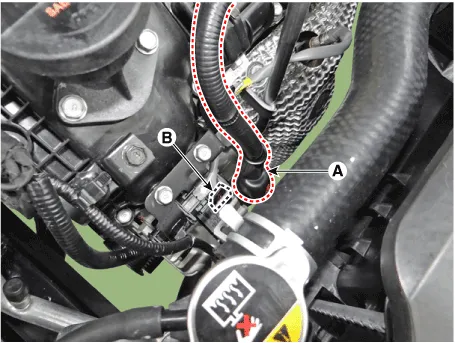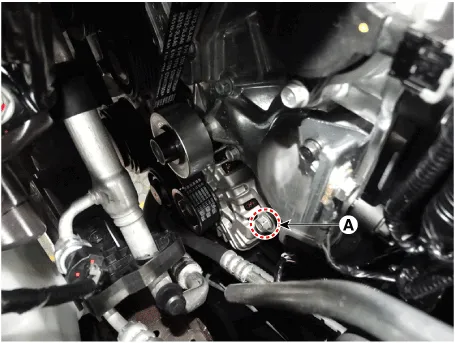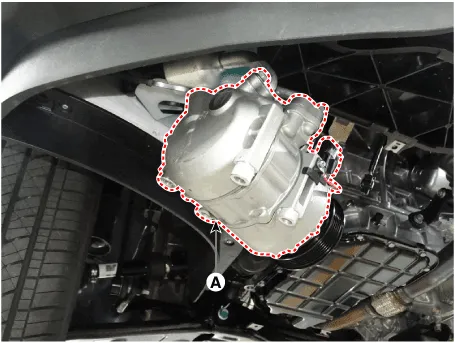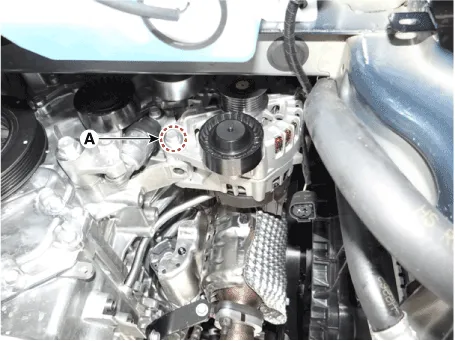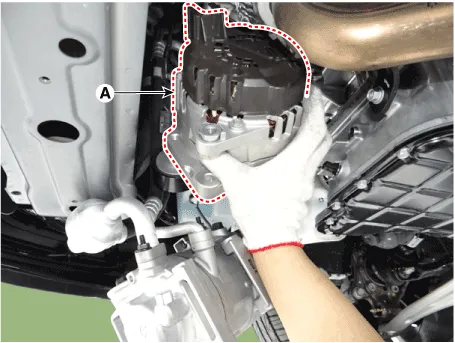Hyundai Palisade (LX2): Charging System / Alternator
Specifications
| Specification |
|
Item |
Specification |
|
Rated voltage |
13.5V , 180A |
|
Speed in use |
1,500 - 18,000rpm |
|
Voltage regulator |
IC Regulator built in type |
|
Default regulated voltage (V) [COM terminal] |
14.09 - 14.91 (-35°C) |
|
13.96 - 15.04 (140°C) |
|
|
Pin |
1 |
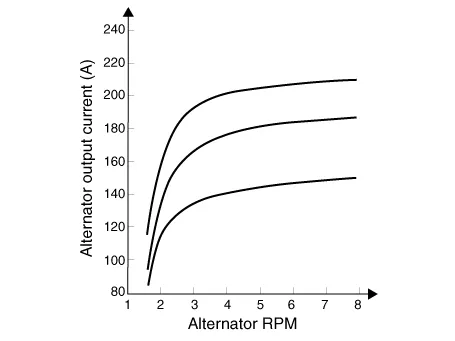
Description and operation
| Description |
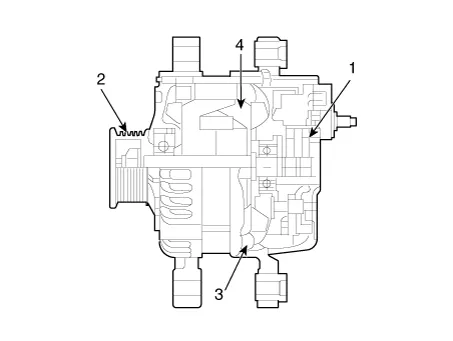
| 1. Brush 2. Drive belt pully 3. Rotor 4. Stator |
Schematic diagrams
| Circuit Diagram |
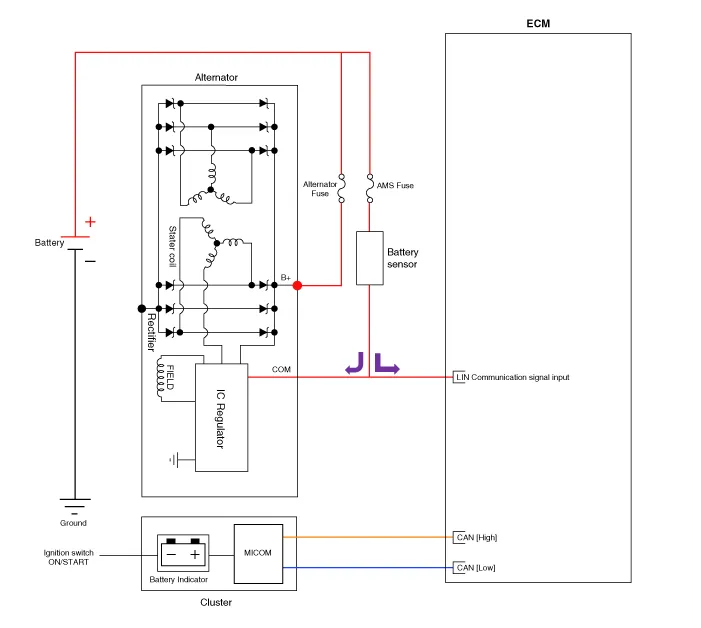
|
Repair procedures
| Removal |
| 1. |
Turn ignition switch OFF and disconnect the battery negative (-) terminal.
|
| 2. |
Remove the alternator mounting nut, and then remove the cable(A) from
alternator "B" terminal.
|
| 3. |
Disconnect the alternator connector (B).
|
| 4. |
Remove the alternatir upper bolt (A).
|
| 5. |
Lift the vehicle.
|
| 6. |
Remove the engine room under cover.
(Refer to Engine Mechanical System - "Engine Room Under Cover")
|
| 7. |
Remove the drive belt.
(Refer to Engine Mechanical System - "Drive Belt")
|
| 8. |
Disconnect the compressor ECV connector, and then by loosening the mounting
bolts, widen the gap between the compressor (A) from the engine to remove
the alternator.
|
| 9. |
Remove the alternator lower bolt (A).
|
| 10. |
Remove the alternator (A).
|
| Installation |
| 1. |
Install in the reverse order of removal.
|
| 2. |
Install the drive belt.
(Refer to Engine Mechanical System - "Drive Belt")
|
Troubleshooting • Be careful not to short-circuit the wiring by the body or other wirings.
Specifications Specification Item Specification Model type AGM80L-BCI Capacity [20HR/5HR] (AH) 80/64 Cold Cranking Amperage (A) 800 (SAE) / 640 (EN) Reserve Capacity (Min) 155 ▷CMF68L-DIN Item Specification Capacity [20HR / 5HR] (AH) 68 / 54 Cold Cranking Amperage (A) 600 (SAE / EN) Reserve Capacity (Min) 113 ▷CMF80L-DIN Item Specification Capacity [20HR / 5HR] (AH) 80 / 64 Cold Cranking Amperage (A) 660 (SAE / EN) Reserve Capacity (Min) 145 ▷CMF90L-DIN Item Specification Capacity [20HR / 5HR] (AH) 90 / 72 Cold Cranking Amperage (A) 740 (SAE) / 740 (EN) Reserve Capacity (Min) 170 ▷CMF68L-DIN [Openable] Item Specification Capacity [20HR / 5HR] (AH) 68 / 54 Cold Cranking Amperage (A) 600 (SAE / EN) Reserve Capacity (Min) 113 ▷CMF80L-DIN [Openable] Item Specification Capacity [20HR / 5HR] (AH) 80 / 64 Cold Cranking Amperage (A) 660 (SAE / EN) Reserve Capacity (Min) 145 ▷CMF90L-DIN [Openable] Item Specification Capacity [20HR / 5HR] (AH) 90 / 72 Cold Cranking Amperage (A) 740 (SAE) / 740 (EN) Reserve Capacity (Min) 170 • Model type description • Cold Cranking Ampere (CCA) : A rating used in the battery industry to define a battery's ability to start an engine in cold temperatures.
Other information:
Hyundai Palisade (LX2) 2020-2025 Service Manual: Rear Heater Core
Repair procedures Replacement 1. Remove the rear heater & A/C unit. (Refer to Rear Heater - "Rear Heater Unit") 2. Loosen the mounting screws and remove the rear heater core cover (A).
Hyundai Palisade (LX2) 2020-2025 Service Manual: Front Radar Unit
Specifications Specification Item Specification Power supply (V) 12 Operation voltage (V) 9 - 16 Description and operation Description The smart cruise control unit is installed on the front right-hand side of the chass
Categories
- Manuals Home
- Hyundai Palisade Owners Manual
- Hyundai Palisade Service Manual
- Emergency liftgate safety release
- Lift and Support Points
- Resetting the Driver's Seat Memory System
- New on site
- Most important about car


